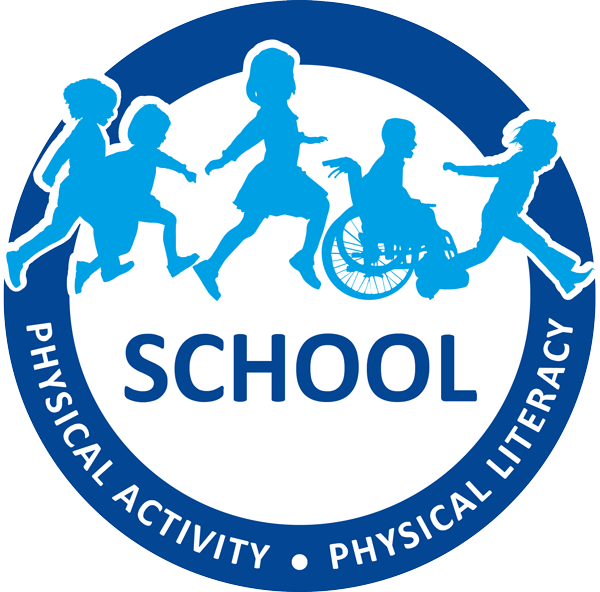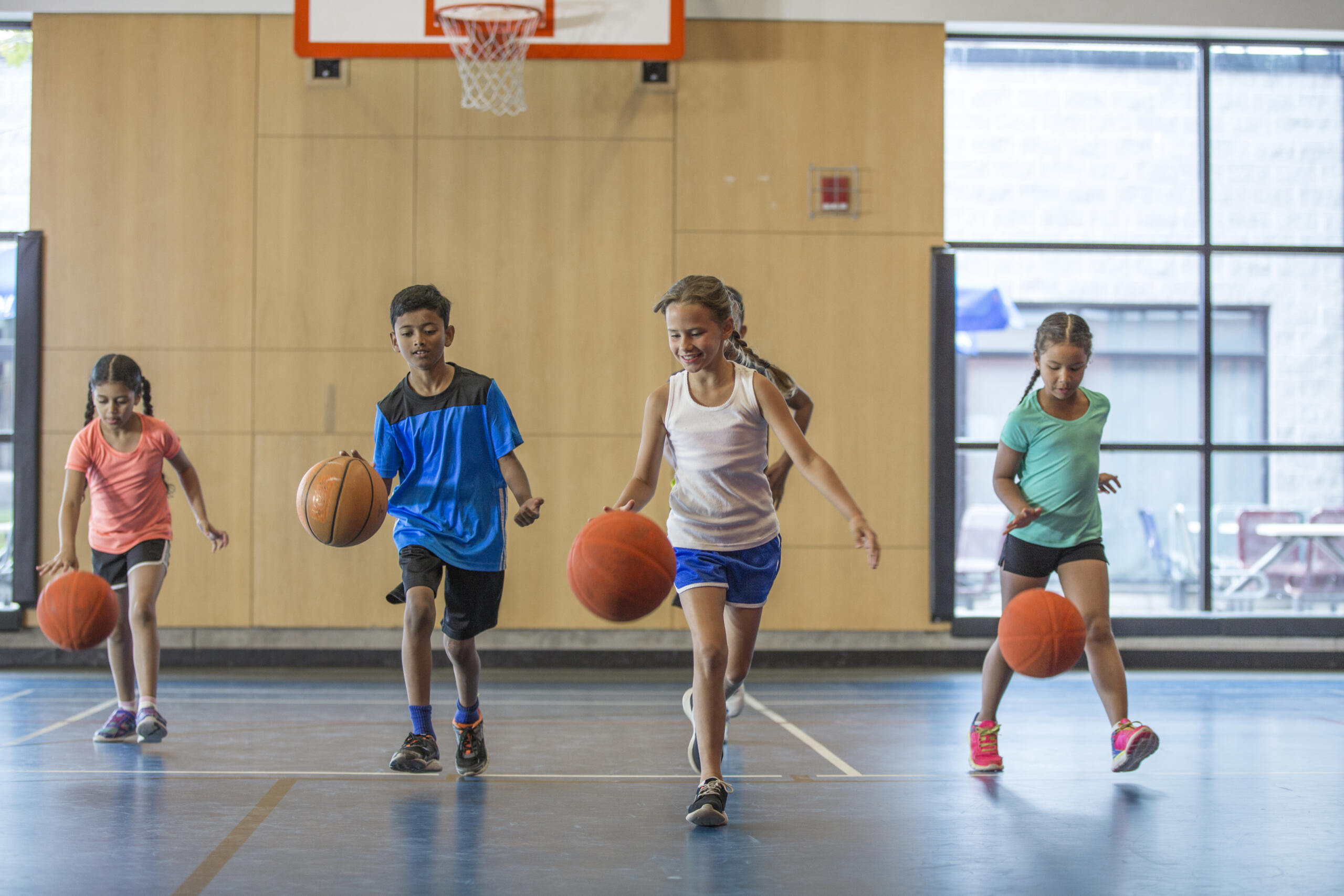Do your students know how to throw and catch a basketball?
In our School Physical Activity and Physical Literacy resource on manipulative skills, otherwise known as “sending and receiving skills”, we cover how learning to catch and throw a basketball requires more advanced neuromuscular development than locomotor and non-locomotor tasks. But, they are also fun to learn—and can be explored through a variety of activities and sports!
Here’s a step-by-step guide on how to support your students as they explore the basics of basketball, one of several sports that can help build those manipulative skills:
Catching Sequence
- Student stands with arms making a basket and hands facing up. A large, soft ball is then tossed into the “basket”, and the student pulls the ball into their chest.
- Same underhand catch, but the student is encouraged to use only hands and fingers to catch the ball.
- Catch the ball one-handed when thrown from greater and greater distance.
- Catch the ball one-handed when the ball is thrown above the head.
One of the first things for students to master when learning to catch is how to maintain eye contact with the ball. As it flies through the air towards them, their eyes have to turn inwards to track the ball’s flight. If they haven’t developed this skill yet, they may close their eyes or turn their face away when trying to catch it. As they build confidence, you will see them maintain eye contact with the ball throughout its flight through the air.
Once they’ve mastered catching the ball, the next step is to try throwing – a skill most students have learned by the end of Grade 2, but can happen earlier or later.
Throwing Sequence
- Immature throw: A student faces the direction they are throwing and only uses their elbow and wrist.
- Intermediate throw: Incorporates a step, with the student stepping forward with the same foot as they throw with (left foot step, left hand throw; right hand step, right hand throw).
- Mature throw: Incorporates a step, with the opposite foot to the throwing hand, and involves starting with the body sideways to the throw, and twisting the body. Once the mature throwing pattern is established, students practice throwing for greater distance and with greater accuracy.
When your students can confidently throw and catch the basketball, it’s time to incorporate some fun games into your gym time! Try these three activities from PLAYBuilder to further develop those throwing and catching skills:
Basketball Dribble Weave
Setup
- Place participants into groups that provide maximum movement and participation.
- Line them up on the end line. Give each participant a ball.
- Place about six cones or poly spots in a line in front of each group, with about a couple feet in between cones/poly spots.
- Stress that this is not a race.
Instructions
- The first person in each line dribbles forward and weaves in and out of the cones/poly spots to the other end line and back. Then, the next person in line goes.
- While the participants are waiting for their turn, they can dribble on the spot to increase movement.
- Continue for an allotted time period.
- You can challenge the participants to go a little faster as they become more comfortable.
Basketball Shooting Cues
Share these helpful cues with your students to help them learn how to shoot a basketball.
Instructions
- Bend knees, eyes on target.
- Balance the ball in your shooting hand, with the other hand on the side as a guide.
- Straighten your knees and elbows.
- Snap wrist.
- Follow through.
Basketball Passing Practice
Setup
- Place participants into pairs with a ball.
- Have them stand several feet away, facing each other.
Instructions & Cues
- Partners practice the chest and bounce pass (cues below).
- They may count to see how many passes they can get in a row.
- If it’s too easy, they may step back. If it’s too hard, they may step closer together.
Chest Pass
- Body faces the target.
- Thumbs to chest.
- Step towards the target.
- Extend arms fully, releasing the ball.
- Thumbs now point downwards.
Bounce Pass
- Body faces the target.
- Thumbs to chest.
- Step towards the target.
- Extend arms fully, releasing the ball downwards.
- Ball should contact the floor two thirds of the way to the target.
That’s just the beginning! As your students continue developing their basketball skills, you can easily slot these activities into your school day with PLAYBuilder – which is free for BC educators!

